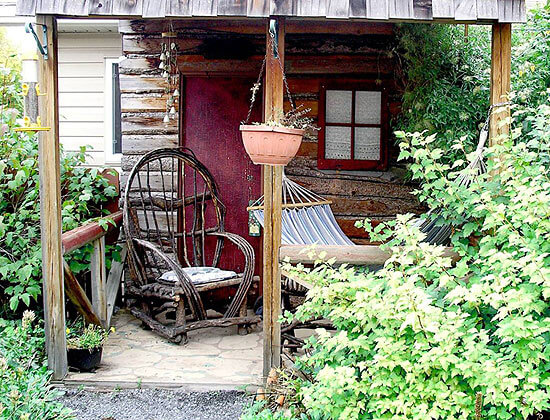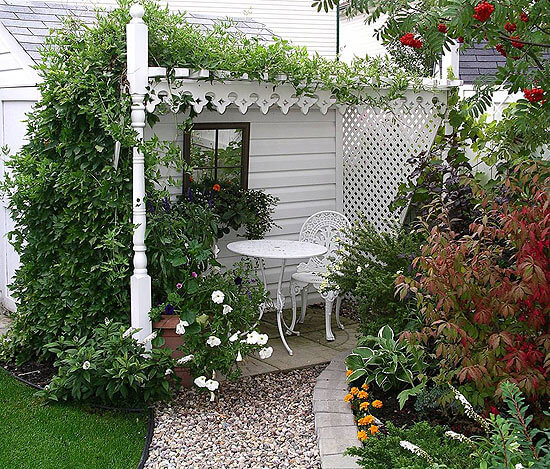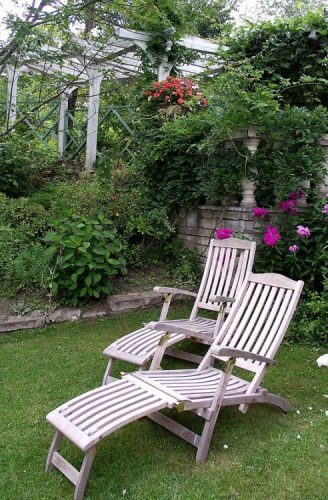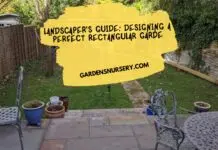Assess your garden to determine what you’ll want in terms of materials, style, and location

1. Practical or Fanciful?
How you use your garden and how much time you spend in it will help to determine what type of garden seating is best for you. Your garden probably serves several purposes. Perhaps you use the space as a “room” for al fresco dining, a place for the kids to play, or a private haven to help you relax after work.
Seating options for any of these activities have practical considerations: dining chairs should fit easily under a table, a bench for kids should be low to the ground and a comfy lounge for relaxation is a must. Benches are practical in garden settings, too. A bench is inviting when nestled among shade trees.
2. Focal Point Seating

3. Location of Seating Style in your Backyard
Location, location, location: Where you place seating in the garden is as important as the chair itself.
Consider these tips:
- Locate seating where a favorite view of your garden can be enjoyed.
- Tuck a chair into a quiet nook so you can get away from the world.
- Position a seat near a water feature so you can enjoy the sights and sounds of an ecosystem unlike anywhere else in the garden.
- For dining, arrange seating on patios and near barbecues.
- Treat a special seat as a focal point.

4. What’s your style?
Choose seating that fits in with the overall style and mood of your garden.
Formal: The straight lines of heavier more substantial pieces such as a stone bench or a teak Luytens-style loveseat (example shown above) suggest an air of formality.
Informal: Sleek, sophisticated furniture tends to look out of place in informal gardens. Rustic styles such as chairs fashioned out of bent willow are more at home in a relaxed garden. Traditional designs, such as Muskoka chairs, add to the ambiance of a country- or cottage-style garden.
Modern: Contemporary chairs usually feature clean lines and are often made from man-made elements such as steel, glass, and chrome. A traditional style updated with high-tech materials creates a modern, contemporary flair.

5. Materials
When choosing garden seating, a good rule of thumb is to choose furniture that withstands local weather conditions (temperature, rain, and wind speed). For years of enjoyment, invest in the best quality you can afford.
Metal: Cast and wrought iron are very durable. Cast iron is heavier than cast aluminum and can withstand any weather condition. But, aluminum is both durable and inexpensive.
Wood: Teak is considered the crème de la crème for garden furniture because it is heavy, rot-resistant, and maintenance-free. Nothing compares to the beautiful patina that teak develops over time. Cedar is a less expensive alternative that does not crack easily and is highly weather resistant. It ages well and fits naturally into an outdoor setting.
Wicker and rattan: Wicker and rattan are lightweight and sturdy. Though natural rattan is a renewable source, it deteriorates over time. New synthetic materials look like wicker but stand the test of time.
Plastic: Cheap and cheerful, plastic is available in every color of the rainbow with designs getting more stylish all the time—great for temporary seating.











